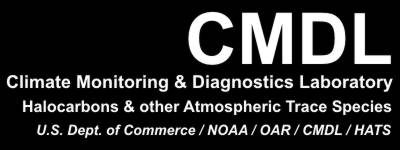Reduction stage data loss...
...associated with deficiencies in the database structure.
The original database consists of several files, one for each station
and for each year of data, each containing either integrated area or
height values. The structure of these database files varies according to
the specifics of the sampling protocol used, with database records being
constructed to hold 2 to 8 hours worth of chromatograms consisting of 2,
3, or 4 sample injections. Each record is timestamped according to the
first, and sometimes only, environmental sample in the multi-sample
cycle. The data for the remaining samples (i.e. 1 or 2 calibration
samples and 0 or 1 additional environmental samples from a separate
intake line) in the cycle are not timestamped as they are all part of
the same data record. Their times are merely inferred from the timestamp
of the record they belong to. Without going into too much detail, there
were numerous instances, usually associated with an interruption of GC
operation or a system reset, when the timestamp of a database record was
unintentionally altered. Additionally, instances exist when two samples
of the same type were assigned to the same database record and data loss
by overwriting occured. In other cases, calibration and environmental
samples were inappropriately split between different database records and
were effectively lost in the process of computing mixing ratios. Finally,
on rare occasion there was duplication of processed data values from the
same sample at different locations within the database. This occured when
sample reprocessing had been performed to correct cases of erroneous
timestamping or sample type labelling while not properly reinitializing
the problematic section of the database ahead of time. In all of these
cases the duration of the problem within the database is very brief.
However in all but the last case the rate of occurrence appears to be
large enough to merit efforts at correction.

|
Disclaimer
Privacy Notice
|
Climate Monitoring & Diagnostics Laboratory
Halocarbons & other Atmospheric Trace Species
325 Broadway R/CMDL1
Boulder, CO 80305
|
|


